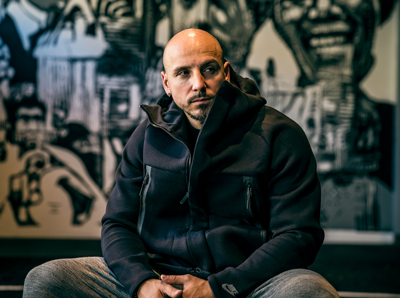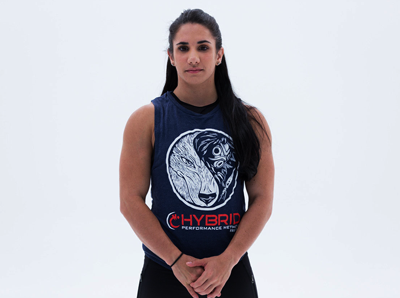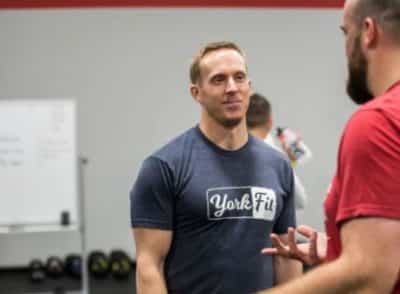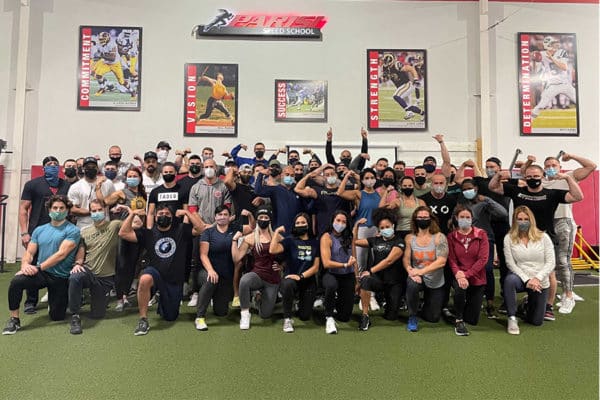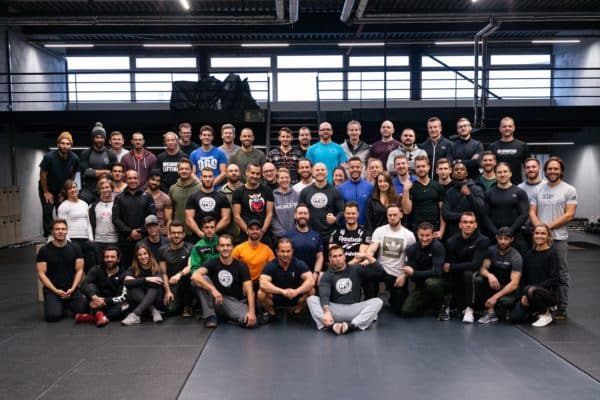Introduction To The 6-Phase Dynamic Warm Up Sequence
1.1 Pain: The Biggest Problem Facing The Fitness Industry
1.2 Bridging The Gap Between Performance and Prevention
1.3 Prioritizing Health and Performance First To Optimize Performance
1.4 The Compounding Power of Prehabilitation
1.5 The 6-Phase Dynamic Warm Up Sequence
Soft Tissue and Self Myofascial Release Techniques
2.1 Breaking Down Mythical Misconceptions of Foam Rolling
2.2 SMR Prescription For Pain-Free, Painful and Dysfunctional Movers
2.3 Oscillatory Soft Tissue Technique
2.4 Neurological Trigger Point Technique
2.5 Global SMR Techniques
2.6 Objectifying Results Based Soft Tissue Practice
2.7 Regional Focuses For Soft Tissue Work
2.8 PRACTICAL: Oscillatory vs. Trigger Point vs. Global
Bi-Phasic Stretching and Mobility Protocols
3.1 Not All Forms of Stretching Are Created Equally
3.2 Debunking Dogmatic Stretching Theory
3.3 The Painful Side of Stretching
3.4 Parameters of Bi-Phasic Stretching Protocols
3.5 Regional Focuses For Stretching and Mobility
3.6 PRACTICAL: Alleviating The Terrible Triad of Hip Tightness
Corrective Based Exercise Strategies
4.1 The Singular Goal For Prescribing A Corrective Exercise
4.2 The 3 S’s To Successfully Implementing Corrective Exercise
4.3 Common Linchpin Corrective Strategies
4.4 Taking Caution With Correctives
4.5 The Motor Control Gap
4.6 Focused Corrective Exercise Prescription
4.7 PRACTICAL: Correctives Damn Near Everyone Needs
Postural Activation Drills
5.1 A Functional Definition of Activation
5.2 Where To Prioritize Postural Activation Strategies
5.3 Requisites of Authentic Activation
5.4 Achieving Shoulder and Hip Centration
5.5 Proper Programming of Activation Drills
5.6 PRACTICAL: The Cornerstones of Stability and Activation
Foundational Movement Pattern Development
6.1 Matching Movements With Key Performance Indicators
6.2 The 6 Foundational Movement Patterns
6.3 Fine Tuning Foundations with Coaching vs. Training
6.4 Grooving The Patterns with Proper Programming Prescriptions
6.5 PRACTICAL: Move Like A Human Before You Move Like An Athlete
Central Nervous System Stimulation Strategies
7.1 The Power of The Central Nervous System
7.2 Two Main Mechanisms of CNS Spiking
7.3 The Post Activation Potentiation Phenomenon
7.4 Superset CNS Stimulation Strategies
7.5 Programming CNS Stimulators
7.6 PRACTICAL: Jumps, Jacks, Plyos and More
General 6-Phase Dynamic Warm Up Programming
8.1 Warm Up Time Investment Specific To Needs
8.2 6-Phase Dynamic Warm Up Individualization Strategies
8.3 Parasympathetic Emphasized Programming
8.4 Corrective Emphasized Programming
8.5 Sympathetic Stimulation Emphasized Programming
8.6 How To Best Utilize The 6-Phase System
8.7 Plug and Play Strategies Via Screening and Assessment Data
Introduction To Optimizing The 6 Foundational Movement Patterns
9.1 Utilizing The 6-Phase Dynamic Warm Up Blueprint
9.2 The Importance of Foundational Movement Patterning
9.3 What About Rotation As The 7 th Movement Pattern?
9.4 Screening vs. Assessment Protocols
The Squat Pattern
10.1 Placing Load Via The Top Down Squat Screen
10.2 Improving Stance Via The Bottom’s Up Squat Screen
10.3 Passive and Active Hip Range of Motion Assessment
10.4 Finding The Perfect Squat: The Hip Quadrant Testing Protocol
10.5 Ankle Mobility Assessment and Correction
10.6 Correcting Squat Pattern Pain and Dysfunction
10.7 Pain-Free Squat Pattern Movement Variation Pyramid
The Hip Hinge Pattern
11.1 More Than The Active Straight Leg Raise
11.2Differentiating Anterior vs. Posterior Hinge Approach
11.3 Screening Load Interaction’s Ability To Alter Pattern
11.4 Finding The Perfect Deadlift: The Standing Hinge Back Test
11.5 Correcting Hip Hinge Pattern Pain and Dysfunction
11.6 Pain-Free Hip Hinge Pattern Movement Variation Pyramid
The Asymmetrical Single Leg Pattern
12.1 The 3 Levels of “Single Leg” Training
12.2 Screening The Split Squat, Lunge and Single Leg RDL
12.3 Advanced Single Leg Assessment: Balance
12.4 Differentiating Ankle vs. Hip vs. Torso Stability Strategies
12.5 The Ultimate Motor Control Challenge: Forward To Reverse Lunge Combo
12.6 Correcting Single Leg Pattern Pain and Dysfunction
12.7 Pain-Free Single Leg Pattern Movement Variation Pyramid
The Upper Body Push Pattern
13.1 Screening The Functional Power of The Push Up
13.2 Finding The Perfect Shoulder Position: The Shoulder Scour Test
13.3 Assessing The Shoulder Complex In The Overhead Position
13.4 Training Strategies For The Push Pattern
13.5 Correcting Push Pattern Pain and Dysfunction
13.6 Pain-Free Push Pattern Movement Pattern Variation Pyramid
The Upper Body Pull Pattern
14.1 Similarities and Differences in Push and Pull Patterns
14.2 Screening The Full Body Pull Pattern
14.3 Advanced Pull Pattern Assessment Via Vertical Plane of Motion
14.4 Programming Pain-Free Shoulder Training Ratios
14.5 Correcting Pull Pattern Pain and Dysfunction
14.6 Pain-Free Pull Pattern Movement Pattern Variation Pyramid
The Locomotive Carry Pattern
15.1 The Simplest Non-Negotiable Screen For Locomotion
15.2 Loading The Locomotion Pattern
15.3 Established Performance Metrics of Loaded Carries
15.4 The Synergistic Function of The Pillar Complex
15.5 The 5 Keystone Developmental Positions
15.6 The Power of Oblique Slings and Synergistic Spiral Effect
15.7 Correcting Carry Pattern Pain and Dysfunction
15.8 Pain-Free Carry Pattern Movement Pattern Variation Pyramid
Introduction To Optimizing The 6 Foundational Movement Patterns
9.1 Utilizing The 6-Phase Dynamic Warm Up Blueprint
9.2 The Importance of Foundational Movement Patterning
9.3 What About Rotation As The 7 th Movement Pattern?
9.4 Screening vs. Assessment Protocols
The Squat Pattern
10.1 Placing Load Via The Top Down Squat Screen
10.2 Improving Stance Via The Bottom’s Up Squat Screen
10.3 Passive and Active Hip Range of Motion Assessment
10.4 Finding The Perfect Squat: The Hip Quadrant Testing Protocol
10.5 Ankle Mobility Assessment and Correction
10.6 Correcting Squat Pattern Pain and Dysfunction
10.7 Pain-Free Squat Pattern Movement Variation Pyramid
The Hip Hinge Pattern
11.1 More Than The Active Straight Leg Raise
11.2Differentiating Anterior vs. Posterior Hinge Approach
11.3 Screening Load Interaction’s Ability To Alter Pattern
11.4 Finding The Perfect Deadlift: The Standing Hinge Back Test
11.5 Correcting Hip Hinge Pattern Pain and Dysfunction
11.6 Pain-Free Hip Hinge Pattern Movement Variation Pyramid
The Asymmetrical Single Leg Pattern
12.1 The 3 Levels of “Single Leg” Training
12.2 Screening The Split Squat, Lunge and Single Leg RDL
12.3 Advanced Single Leg Assessment: Balance
12.4 Differentiating Ankle vs. Hip vs. Torso Stability Strategies
12.5 The Ultimate Motor Control Challenge: Forward To Reverse Lunge Combo
12.6 Correcting Single Leg Pattern Pain and Dysfunction
12.7 Pain-Free Single Leg Pattern Movement Variation Pyramid
The Upper Body Push Pattern
13.1 Screening The Functional Power of The Push Up
13.2 Finding The Perfect Shoulder Position: The Shoulder Scour Test
13.3 Assessing The Shoulder Complex In The Overhead Position
13.4 Training Strategies For The Push Pattern
13.5 Correcting Push Pattern Pain and Dysfunction
13.6 Pain-Free Push Pattern Movement Pattern Variation Pyramid
The Upper Body Pull Pattern
14.1 Similarities and Differences in Push and Pull Patterns
14.2 Screening The Full Body Pull Pattern
14.3 Advanced Pull Pattern Assessment Via Vertical Plane of Motion
14.4 Programming Pain-Free Shoulder Training Ratios
14.5 Correcting Pull Pattern Pain and Dysfunction
14.6 Pain-Free Pull Pattern Movement Pattern Variation Pyramid
The Locomotive Carry Pattern
15.1 The Simplest Non-Negotiable Screen For Locomotion
15.2 Loading The Locomotion Pattern
15.3 Established Performance Metrics of Loaded Carries
15.4 The Synergistic Function of The Pillar Complex
15.5 The 5 Keystone Developmental Positions
15.6 The Power of Oblique Slings and Synergistic Spiral Effect
15.7 Correcting Carry Pattern Pain and Dysfunction
15.8 Pain-Free Carry Pattern Movement Pattern Variation Pyramid



